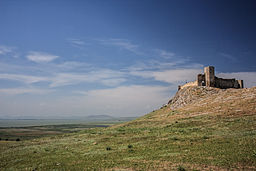I use GIMP for almost all my photography editing by choice, so when reading today a couple of articles about the new RAW photo editing capabilities in Google Plus and how those put Google in a fight with Adobe, as its only worthy competitor, I noticed in both a similar (your probably know how those articles are usually written) expression, along the lines of "don't mention GIMP, while nice it doesn't count". I knew about the RAW import for a few days, but it was not news for me, I don't plan to move my photography storage and editing to the cloud, but now the GIMP comparison made me genuinely curious what is it about.
So away we go! I have handy some RAWs from a recent shooting, it was a matter of uploading one and doing a few clicks, right? Not so fast! The first try, the first FAIL: while the RAW image uploaded properly and it was shown correctly as a JPEG in browser, editing does not work with Firefox, Chrome is needed.

Normally at this step I would give up, I won't change browsers any time soon, but it caught me in the proper mood for that, so I downloaded Chromium. No luck either, this time for an undisclosed reason. No luck with Chrome either. It should be because I am running Linux or they don't like my video driver (according to the troubleshooting page on G+). Clearly, they don't want me as a user.

I was so close to call it a failure and make a funny gesture towards Google... but I was already mounted, gave it another try, this time with Chrome under Windows, fully proprietary. Of course it worked. I can write a bit more than two paragraphs cursing Google for their useless effort.
At the first look, it is a simple interface: next to your picture there are some buttons for various adjustment operations, grouped in two categories "basic" and "Creative" (as you will see later, "Creative" is just a feel-good name, there is little creativity in applying a series of predefined filters).


In the "basic" area are some tools which are
a must for any image to be published: tune image is doing exposure/color adjustments, details is for sharpening and crop & rotate to correct image framing. Everything with an easy to use interface.

Still under the "basic" category, there is a not so basic feature: selective adjust. I found it cute and original (still, no match for selective adjustment from a proper image editing software), you drop adjustments points in the image and tune it around them.

In the "creative" category a first tool is black and white conversion (in my opinion, also the single really useful from the category). It is simple still powerful, allowing to adjust the conversion based on specific colors and fine-tune it.

If about "drama" and "center focus" I am quite neutral (I can see how they may be useful for some, but with a lot of fine-tuning to prevent excess), starting with "frames" I heard a shout in my head "Instagram!". We are on the edge of the bad taste realm. Use everything with extra-care.

"Tilt-shift" is again some cute toy you use on your pictures and pretend it was made with a dedicated lens. The interface is simple and effective, the final result not so much.

"Vintage" and "retrolux" will damage your picture, but they are the wet dream of the ordinary Instagram user, will make the image hip, damaged but hip. Do not use.


As a conclusion, I can say this is no threat to Photoshop and will not replace it ever, is no treat to GIMP either, even it will be more used than probably any of them, is a tool with a different purpose, for a different audience. It may be some competition for tools like Lightroom and Darktable, when they are used for simple "RAW development", but only for simple use cases (no perspective correction? no noise removal? indeed, simple cases). Talking about real competition, it is real competition for Instagram/Facebook, but this probably makes for less sensationalist titles.
I will end my conclusion with a RAW image, first in its initial unedited state and with what I consider good and bad editing.















